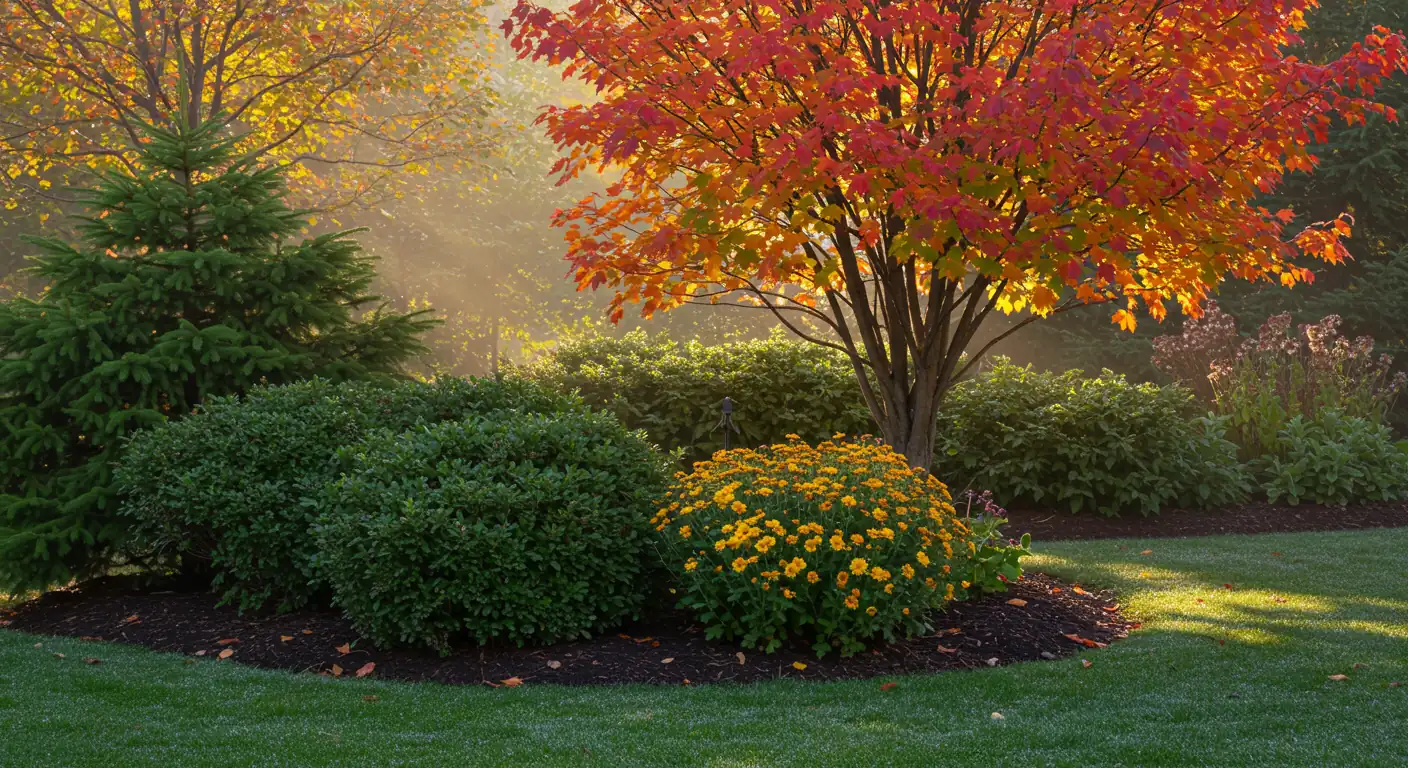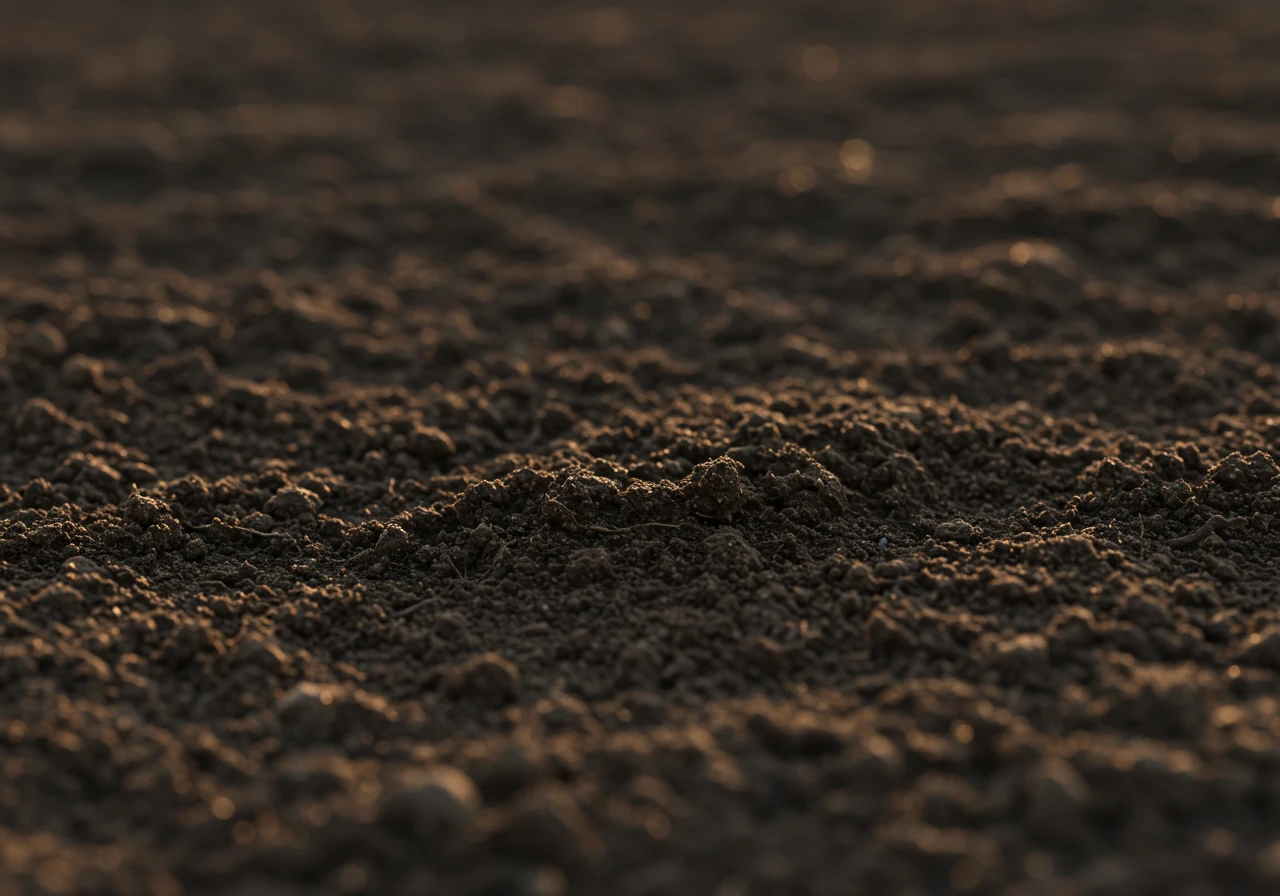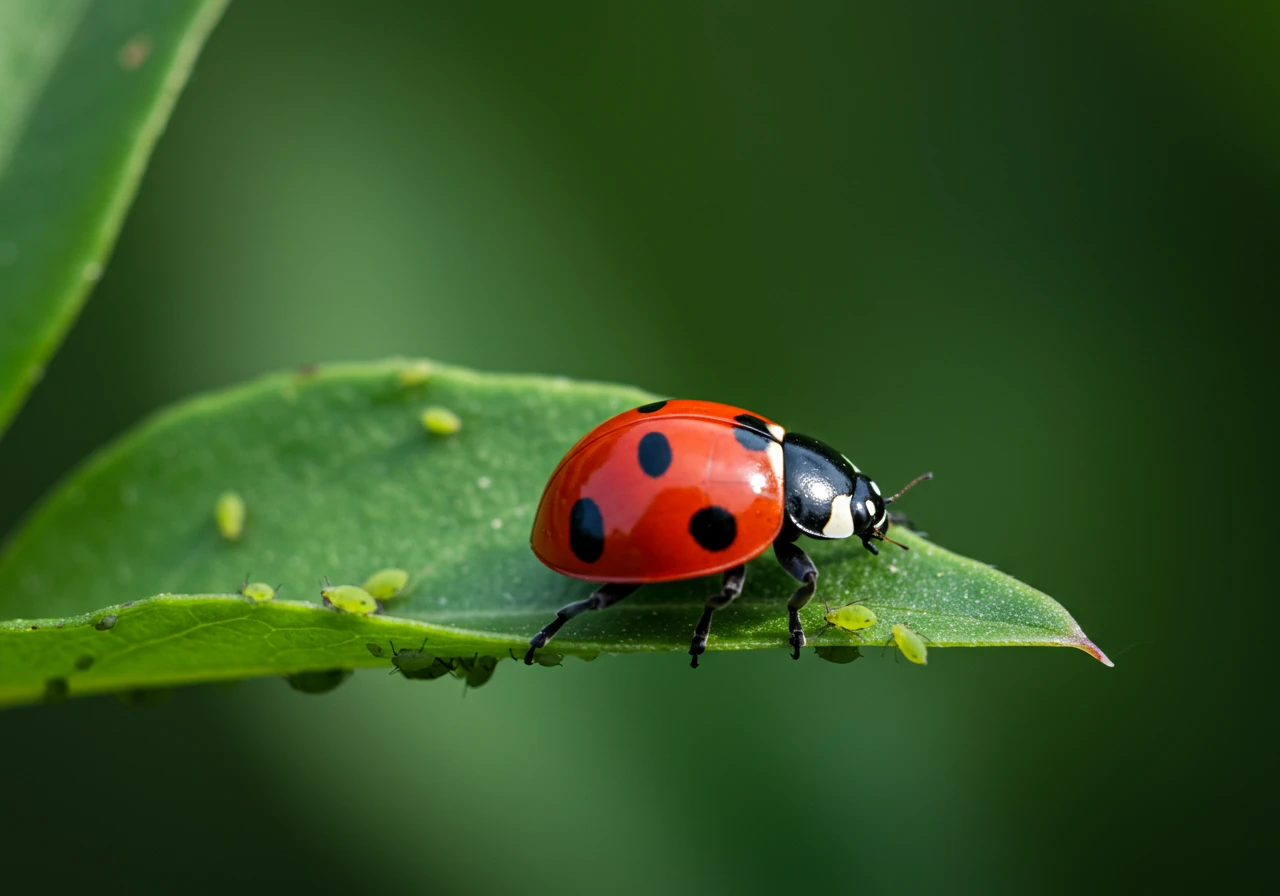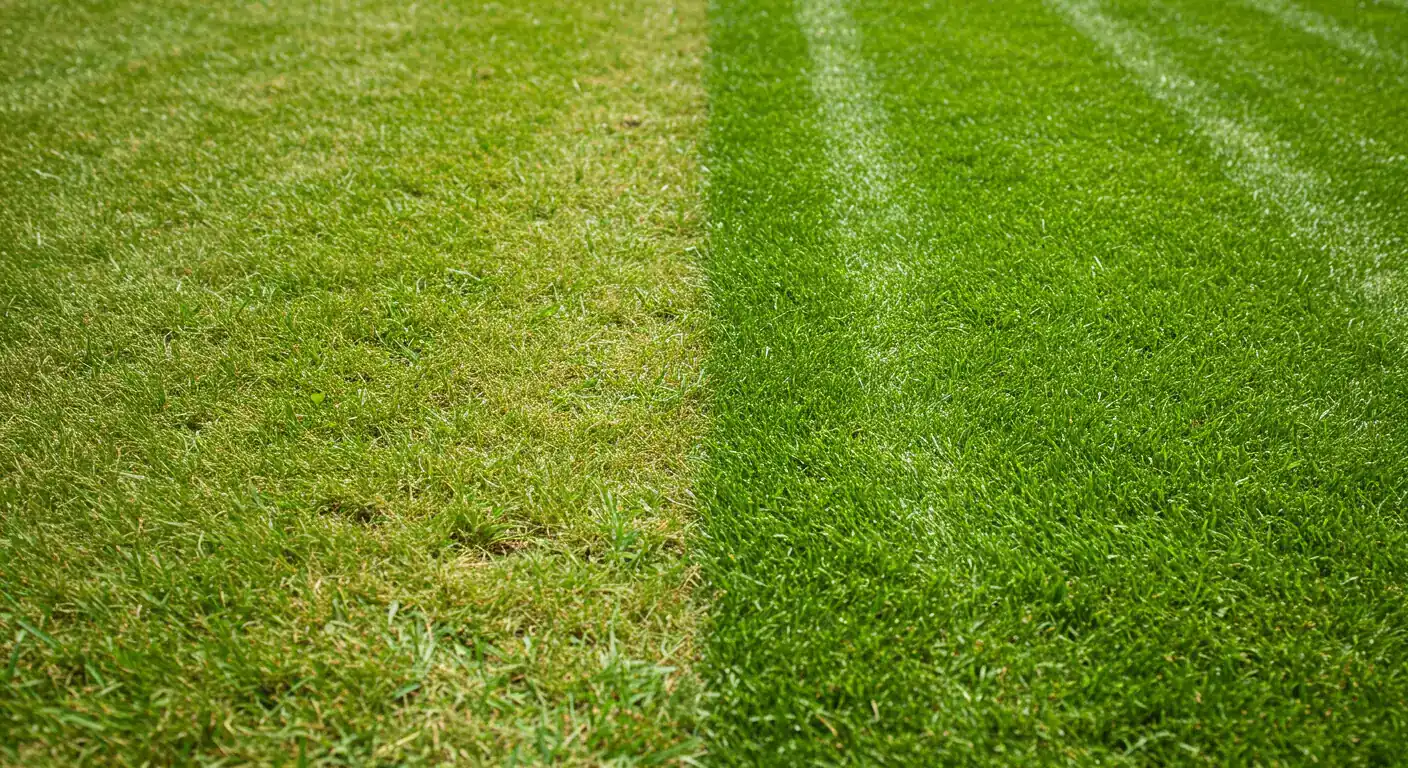Russell Integrated Plant Healthcare: Prevent Costly Loss
Quick Summary: Why IPHC Matters
- Proactive Care: Integrated Plant Healthcare (IPHC) focuses on preventing landscape problems before they start.
- Eco-Friendly: Prioritizes natural methods and minimizes chemical use.
- Cost-Effective: Saves money long-term by avoiding major plant loss and expensive treatments.
- Local Expertise: Tailored strategies for Ottawa's specific climate, soil, pests, and diseases.
- Key Methods: Includes monitoring, cultural controls (soil health, right plant/right place), biological controls (beneficial insects), and physical removal, using chemicals only as a last resort.
Protect your landscape investment! Request a personalized IPHC consultation today.
Request a QuoteIntroduction: Don't Wait for Disaster! Protecting Your Ottawa Landscape with Integrated Plant Healthcare

Remember last summer when your lawn looked less like a lush carpet and more like a patchy, sad toupee? Or perhaps those infamous emerald ash borers decided your beautiful ash tree was *the* prime real estate in Ottawa? Tackling landscape disasters *after* they hit can be a real headache (and often, a surprise expense!). It’s like constantly putting out fires in your Barrhaven backyard instead of enjoying the view. Check out some local resources like the City of Ottawa's guide on Emerald Ash Borer for more information on specific local pests.
That's where Russell Integrated Plant Healthcare (IPHC) flips the script. Think of it as a wellness plan for your plants! Instead of just reacting to problems, IPHC focuses on *prevention* – keeping your landscape strong and healthy so it can naturally fend off many pests and diseases *before* they become major issues. We carefully monitor your trees, shrubs, and lawn, using smart, targeted solutions only when truly necessary, always starting with the kindest options first. It’s about building a resilient, beautiful Ottawa garden you can actually relax in, not constantly stress over. Don't wait for disaster – let's cultivate a healthier landscape together! Explore our full range of landscaping services to see how we can help.
What Exactly is Integrated Plant Healthcare (Besides a Mouthful)?

Alright, let's be honest, "Integrated Plant Healthcare" or IPHC sounds a bit… clinical, maybe even intimidating! Like something requiring a lab coat and safety goggles. But trust us, while it *is* a science-backed approach, it’s more about smart, sensible garden care than anything else. Think of it as a holistic wellness plan for your landscape here in Ottawa.
So, what does it actually *mean*?
In simple terms, IPHC is a proactive, eco-friendly way to keep your trees, shrubs, lawn, and garden plants healthy and thriving. Instead of waiting for disaster to strike – like suddenly noticing your entire hedge in Russell is covered in scale insects and reaching for the nearest potent spray – IPHC focuses on *preventing* problems in the first place and using the gentlest solutions first when issues do pop up.
It’s the opposite of the old "see-a-bug, spray-a-bug" reaction. That approach can sometimes cause more harm than good, potentially wiping out beneficial insects along with the pests, or using harsh chemicals when a simpler fix would do. IPHC is more thoughtful. It’s built on a few core ideas:
- Regular Check-Ups (Monitoring): This means keeping a close eye on your plants. We’re talking regular walks through your garden, looking for early signs of stress, pests, or disease. Are the leaves yellowing? Are there strange spots? Is that bug munching your basil friend or foe? Catching things early makes them *way* easier to handle. Think of it like a routine wellness check. For a more thorough approach, you might explore options like a Russell Garden Vitality Scan for Early Detection to spot subtle issues.
- Knowing When to Act (Thresholds): Here’s a key difference: IPHC doesn't aim for a completely sterile, bug-free environment (which is impossible anyway!). Instead, it sets thresholds. A few aphids on a rose bush might just be lunch for ladybugs – no action needed! We only step in when pest populations or disease symptoms reach a level where they actually threaten the plant's health or the beauty of your Nepean landscape. It’s about balance, not total annihilation.
- Building Strong Defences (Prevention): This is the foundation! Healthy, unstressed plants are naturally better at fighting off pests and diseases. Prevention involves lots of common-sense gardening practices:
- Improving soil preparation and health (the cornerstone of happy plants!).
- Watering properly – not too much, not too little.
- Choosing plants suited to our Ottawa climate and your specific yard conditions (sun, shade, soil type). See our material selection guide for tips.
- Regular maintenance like proper mowing – learn the Secrets to Perfect Russell Lawn Care for a resilient turf.
- Smart pruning techniques, like knowing the Best Time for Spring Pruning of Ornamental Grasses in Russell.
- Keeping plants vigorous through practices like discovering the Russell Summer Deadheading Secrets to Extend Blooms.
- Using a Mix of Tools (Multiple Tactics): When action *is* needed, IPHC uses a combination of strategies, starting with the least disruptive. This could mean physically removing pests (like picking off Japanese beetles), using beneficial insects, applying horticultural oils or soaps, improving drainage, or adjusting watering schedules. Targeted, lower-impact treatments are preferred, and broad-spectrum pesticides are only used as a last resort when absolutely necessary.
Ultimately, Integrated Plant Healthcare leads to stronger, more resilient plants, a healthier local ecosystem, and less reliance on chemical interventions. It's a smarter, more sustainable way to care for your valuable landscape investment, and it's a core part of our philosophy for all our Landscaping and Garden Care Services. It’s about working *with* nature, not just against it. Considering a new garden installation? Starting with IPHC principles ensures better long-term success.
Need help implementing IPHC? Our team provides expert care.
Get Professional Help With Your Garden HealthOttawa's Wild Side: Why Local Landscapes Thrive with IPHC
Okay, let's dive into why Integrated Plant Healthcare (IPHC) isn't just a fancy term, but a real game-changer for keeping gardens green and gorgeous right here in the Ottawa region. Our neck of the woods throws some unique curveballs at our plants, and an IPHC approach is like having a secret playbook to handle them!
Surviving the Ottawa Weather Rollercoaster
You know the drill: bone-chilling winters that freeze the ground solid, unpredictable spring thaws followed by potential late frosts, and summers that can swing wildly between soggy and drought-stricken. Phew! This weather rollercoaster puts *serious* stress on plants.
- Why IPHC Helps: A core principle of IPHC is building *plant resilience*. This starts below ground. By focusing on improving soil structure and health – adding organic matter, ensuring proper drainage – we help plants develop stronger root systems. Stronger roots mean plants are better equipped to handle winter freezes, find water during dry spells, and bounce back from stress. It’s proactive defence, not just damage control. Consistent care makes a huge difference, which is why consistent professional lawn care is a key part of strengthening your turf against weather extremes.
Battling the Local Bad Bugs and Bothersome Blights
We've got our share of specific landscape headaches in Ottawa and surrounding areas like Manotick or Greely. Emerald Ash Borer (EAB) has sadly devastated many ash trees. Lawn grubs munch away roots, leading to those ugly brown patches. And humid summer days? They're practically an invitation for fungal diseases like powdery mildew or black spot on roses. For detailed local info, the Rideau Valley Conservation Authority offers resources on regional environmental health.
- Why IPHC Helps: IPHC shines here! Instead of waiting for a full-blown infestation, IPHC involves *regular monitoring*. Catching grub damage early means less lawn destruction. Spotting the first signs of fungus allows for simple fixes like pruning for better air circulation or using targeted, gentler treatments *before* it spreads. Removing diseased plant material promptly, perhaps as part of a thorough Metcalfe garden clean-up service, prevents spores from overwintering. Similarly, understanding which pests are actually harmful versus beneficial avoids unnecessary spraying. This preventative mindset is also crucial; think of how a proactive Russell yard cleanup service removes potential pest habitats before they become a problem. Consider our Ottawa garden clean up service for broader area coverage.
Tackling Tricky Soil Types
From the heavy clay common in parts of Nepean and Barrhaven (great at holding nutrients, not so great at draining!) to the sandier soils you might find closer to the river in areas like Kars (drains quickly, maybe *too* quickly!), our local soils present their own challenges.
- Why IPHC Helps: Soil health is central to IPHC. Whether it's amending clay soil to improve drainage and aeration or adding compost to sandy soil to boost water and nutrient retention, IPHC focuses on creating the best possible growing environment. This means healthier plants that are naturally less susceptible to pests and diseases. This is often a key part of a regular Ottawa yard cleanup service, addressing soil as part of overall yard health. We also offer specific services like the City yard cleanup service or the Metcalf yard cleanup service.
Working Smarter, Not Harder (and Greener!)
Plus, Ottawa has cosmetic pesticide bylaws for a reason – protecting our local environment and waterways. IPHC perfectly aligns with this, prioritizing non-chemical solutions first and only using targeted treatments when absolutely necessary. It's effective, responsible, and leads to truly thriving landscapes. It’s about leveraging a whole suite of smart techniques, reflected in our comprehensive landscaping and garden care services, to keep your piece of Ottawa looking its best. Regular upkeep through our City garden maintenance service embodies this principle.
The IPHC Toolkit: More Than Just a Sprayer!


So, you're on board with Integrated Plant Healthcare (IPHC) – fantastic! But what does it actually *look like* in practice? Is it just about swapping one spray bottle for another? Absolutely not! Think of IPHC as having a whole toolbox full of strategies, not just a single hammer. We aim for healthy, balanced landscapes across Ottawa, using the *right* tool for the *right* job, always starting with the gentlest options first. It's less about brute force and more about smart garden wisdom.
Let's unpack the main tools in the IPHC kit using this tabbed interface:
Cultural Controls: The Foundation
This is all about prevention and creating an environment where plants *naturally* thrive and resist problems. It's the most eco-friendly approach! Think of it as good gardening habits dialed up a notch.
- Examples: Choosing plants suited for our Ottawa climate and your specific yard conditions (sun/shade), rotating crops in veggie gardens, improving soil health (this is huge!), watering properly (deeply but less often is usually best), mowing your lawn to the right height, and practicing good sanitation.
- Practical Tip: Good sanitation means cleaning up fallen diseased leaves or debris where pests might hide. This is a key part of any effective Ottawa Yard Cleanup Service and is especially important in the fall to reduce overwintering problems – something to consider for a specialized service like a Marionville Garden Clean Up Service if you're in that area. Excellent Soil Preparation provides the healthy base plants need to fight off invaders themselves. Consider our City garden clean up service for urban settings.
Biological Controls: Nature's Helpers
This involves using living organisms – the good guys! – to manage pests. It’s like recruiting a tiny army to protect your plants.
- Examples: Releasing ladybugs to munch on aphids, introducing beneficial nematodes to the soil to target lawn grubs, or using Bacillus thuringiensis (Bt), a naturally occurring bacterium, to control caterpillars.
- Practical Tip: You can encourage beneficial insects naturally by planting a variety of flowers (especially native ones) that provide nectar and pollen throughout the season. Less spraying also helps keep these helpful critters around! Learn more about beneficial insects from resources like the Ontario Ministry of Agriculture, Food and Rural Affairs (OMAFRA).
Mechanical & Physical Controls: Hands-On Solutions
These are direct, physical methods to remove or block pests. Sometimes the simplest solutions are surprisingly effective!
- Examples: Hand-picking Japanese beetles off your roses and dropping them into soapy water (oddly satisfying!), using strong water sprays to knock aphids off plants, setting traps (like sticky traps for flying insects or slug traps filled with beer), installing physical barriers like row covers over vegetables, or pruning out branches infested with scale insects.
- Practical Tip: A morning stroll through your garden in Barrhaven or Greely can be a great time for hand-picking pests before they multiply.
Chemical Controls: The Last Resort
Sometimes, despite our best efforts with other methods, a pest or disease problem gets out of hand and threatens serious damage. *This* is when targeted chemical controls might be considered.
- Emphasis: IPHC prioritizes using the *least-toxic* options first, like insecticidal soaps or horticultural oils. When stronger products are absolutely necessary, they are applied carefully and selectively, targeting *only* the problem area to minimize impact on beneficial insects and the environment. Think pinpoint accuracy, not broad blasting. It's a measured response, not a knee-jerk reaction. Always follow label directions and consider regulations like Ottawa's cosmetic pesticide bylaw.
Putting It All Together: The IPHC Flow
These methods aren't used in isolation; they work together! The process usually looks like this:
- Monitor: Regularly check your plants (see quick guide below!).
- Identify: Figure out exactly what the problem is (pest? disease? environmental stress?).
- Assess: Is the problem actually causing significant harm or likely to? (Remember thresholds!).
- Implement: Start with cultural, biological, and/or mechanical controls first. Ongoing care through a City Garden Maintenance Service often incorporates these steps seamlessly.
- Evaluate: Did it work? If not, and the problem is worsening, *then* consider targeted chemical controls as a last resort. A comprehensive City Yard Cleanup Service can also help remove affected plant matter after treatment.
Quick Garden Monitoring Guide:
- Step 1: Walk & Look: Regularly stroll through your yard (weekly is great). Look at your plants overall – any yellowing, wilting, or general unhappiness?
- Step 2: Get Closer: Check under leaves, along stems, and near the soil line. Look for spots, holes, weird growths, or actual bugs.
- Step 3: What Is It?: Try to identify the bug or the spot. Is it a known pest, or maybe a harmless visitor? (A quick online search or photo app can help!).
- Step 4: Action Needed?: Are there just a few? Maybe wait and see. Is the plant covered or looking really sick? Time to choose a tool from the IPHC toolkit!
By using this thoughtful, multi-faceted approach, IPHC helps create resilient, beautiful landscapes that require fewer interventions over time. It’s about working smart, respecting nature, and enjoying your Ottawa garden to the fullest! Our About Us page details our commitment to these practices.
Show Me the Money (Saved!): The Cost-Effectiveness of IPHC

Alright, let's talk dollars and *sense*. While Integrated Plant Healthcare sounds fancy, one of its biggest perks is actually pretty simple: it saves you money in the long run! Think of it like regular oil changes for your car – a small investment now prevents a massive repair bill later. Dealing with landscape problems *after* they blow up can hit your wallet hard, especially here in Ottawa where replacing a mature tree lost to pests or disease, or re-sodding a grub-decimated lawn in Barrhaven (a service like sod installation can be costly), can cost thousands.
IPHC flips the script by focusing on prevention. Keeping plants healthy makes them naturally tougher against attackers. This means less money spent on emergency "rescue" treatments or costly replacements. Catching an issue early often allows for simpler, cheaper fixes compared to tackling a full-blown infestation or disease outbreak. It also means buying fewer potent pesticides – good for your budget *and* the environment!
Consider this simple breakdown in the table below, and see the chart for a visual comparison of potential costs:
| Scenario | Proactive IPHC Approach (Lower Cost Potential) | Reactive "Wait & See" Approach (Higher Cost Potential) |
|---|---|---|
| Lawn Grub Control | Regular monitoring, healthy lawn care, possible beneficial nematodes ($) | Major reseeding or sodding sections ($$$) |
| Tree Pest/Disease | Monitoring, soil health improvements, targeted treatment if needed ($$) | Expensive injections, potential tree removal & replacement ($$$$) |
| Garden Health | Healthy soil via good soil preparation, right plants, early fixes ($) | Replacing many dead plants, extensive Property Clean Up ($$$) |
Potential Cost Comparison: IPHC vs. Reactive Care
*Illustrative costs only. Actual costs vary greatly depending on property size and specific issues.
That small investment in proactive care, like ensuring good soil health before you even think about a new Garden Install, pays dividends. It prevents the need for costly interventions later. Neglected properties often require significant work; compare the cost of ongoing IPHC to a major rescue job like a full Metcalf Property Cleanup Service or Ottawa Property Cleanup Service needed after years of problems accumulating. Even simple steps like regular Marionville Garden Clean Up Service or a City Garden Clean Up Service to remove diseased leaves prevent costly spread.
Plus, a thriving, beautiful landscape significantly boosts your home's curb appeal and overall property value – a nice bonus whether you're in Richmond, Manotick, or Russell. Investing in a service like a proactive Metcalfe Yard Cleanup Service or a Marionville Yard Cleanup Service isn't just tidying up; it's contributing to the long-term health and value of your property. So, IPHC isn't just good for your plants; it's smart money management for your biggest investment – your home. See some examples of transformations on our Transformations page.
Russell's Proactive Plant Care: Your Local IPHC Experts
Alright, let's talk about keeping *your* specific corner of the Ottawa region looking its best! Here at Russell Integrated Plant Healthcare (a service by Clean Yards), we're not just general landscapers; we're your friendly neighborhood IPHC specialists, deeply familiar with the unique quirks of growing things here. Whether you're tending a garden in Greely, managing mature trees in Osgoode, or battling pests in Embrun or Metcalfe, we understand the local soil (hello, clay!), the common critters, and our wild weather swings. Think of us as plant detectives for your property! Check out our profile on Google.
Our approach isn't one-size-fits-all. We know every yard is different, so we start by listening and looking *closely*. Our IPHC services are built around:
- Personalized Monitoring: Regular check-ups to spot potential trouble *before* it becomes a disaster. We get to know your plants!
- Accurate Diagnosis: Identifying the *real* issue, whether it's a pest, disease, nutrient deficiency, or environmental stress. No guesswork allowed!
- Targeted, Gentle Treatments: Using eco-friendly options like horticultural oils, soaps, or beneficial insects first. We only consider stronger treatments as a last resort, always applied responsibly.
- Preventative Strategies: Offering practical advice on watering, soil health, and choosing the right plants for *your* spot. This is key for successful long-term plant health and informs our smart material selection advice if you're planning changes.
Seasonal IPHC Focus in Ottawa
Spring Kickstart
Assessment after winter, soil testing/amendment recommendations, dormant oil application if needed, initial pest monitoring (e.g., tent caterpillars), preventative measures for early-season diseases.
Summer Vigilance
Peak pest season monitoring (grubs, aphids, beetles), disease watch (powdery mildew, black spot), watering assessments, fertilization adjustments based on plant needs.
Fall Preparation
Disease & pest cleanup (removing affected leaves/debris), late-season pest checks, soil health boosters for winter resilience, recommendations for protective measures (e.g., burlap wraps).
Winter Dormancy
Minimal active monitoring, but includes assessing winter damage potential, planning for spring interventions, ensuring protective measures are secure.
We customize our IPHC plans because your landscape goals are unique. Maybe you're focused on boosting your veggie garden yield or ensuring the success of a brand-new healthy garden installation. We tailor our services to meet those needs, always respecting your property. We take your privacy seriously during assessments; you can review our data handling and privacy policy for peace of mind. Let Russell's local expertise put proactive, eco-conscious plant care to work for you! Our commitment to quality garden maintenance reflects this approach.
Highlight Box: IPHC Wisdom in a Nutshell
- Stay Ahead of the Game: Why wait for disaster? IPHC is all about *prevention*. Keeping your plants healthy and strong *before* problems hit is the smartest way to deal with common Ottawa pests and diseases. Think strong defences, not frantic rescues!
- Be a Plant Detective: Grab your metaphorical magnifying glass! Regularly check your garden – get to know what's normal for your plants. IPHC involves watching for early warning signs and understanding the bigger picture, like how amazing soil helps plants fight back. It's a key part of maintaining overall yard health, something often addressed during a thorough Ottawa property cleanup service or Metcalf property cleanup service.
- Don't Freak Out Over Every Bug!: Seriously, take a breath. A few nibbled leaves don't always mean war. IPHC sets thresholds – we only step in when pests or diseases *really* threaten your plant's health in places like Greely or Osgoode. We always start with the gentlest, most eco-friendly solutions first, like simply removing infected plant bits – a crucial tactic in specialized services like our Marionville yard cleanup service for preventing spread. Check our terms and conditions for service details.
- More Than Just Sprays: Forget the idea that plant care only comes in a spray bottle. IPHC uses a whole toolbox! This includes smart pruning, improving your soil, using beneficial insects, and making wise choices like picking the right plants for your specific spot (need help? Check out our guide to smart landscaping material selection). Harsh chemicals are always the absolute last resort. Proper mulching and edging also contribute to plant health.
- Smart for Your Wallet & Your Yard: A little proactive care now saves *big* bucks later by avoiding costly plant replacements or major interventions. Healthy, beautiful landscapes also boost your property value! It’s a sensible approach, and we believe in transparency – see how we handle estimate feedback to ensure you understand the value. A comprehensive City property cleanup service can prevent larger costs later.
- Get Expert Local Help: Every Ottawa-area yard has its own personality! For a tailored IPHC plan that fits your specific landscape, goals, and budget, don't hesitate to reach out and contact us. We're happy to share our local expertise! You might also need a Marionville property cleanup service depending on your location.
Your Ottawa IPHC Questions Answered (FAQs)
Absolutely! That's one of the biggest benefits. IPHC prioritizes non-chemical solutions first, like improving soil health or using beneficial insects. Any treatments used are chosen carefully, starting with the least-toxic options. Harsher chemicals are truly a last resort, applied selectively only when absolutely necessary, minimizing exposure and keeping your Ottawa yard safer for everyone.
Not necessarily "never," but definitely "way, way less often!" IPHC focuses on prevention and using gentle methods first. If a pest problem in your Barrhaven garden gets really bad and threatens serious damage, we might consider a targeted, specific pesticide application. But it’s always the last option after exploring cultural, biological, and physical controls first.
That's great it looks healthy! IPHC helps *keep* it that way. Think prevention! Regular monitoring catches subtle issues – maybe early signs of stress or a sneaky pest – before they explode. It’s like spotting hidden problems early during a regular checkup, preventing the need for a major complete city property cleanup service down the road when small issues have compounded into big ones. Healthy gardens benefit most from proactive care!
It varies! Monitoring is most crucial during peak growing seasons (late spring through summer) when pests and diseases are typically more active here in the Ottawa area. We tailor the frequency to your specific landscape and potential risks in Nepean. It often complements seasonal tasks, like those done during an expert Ottawa garden clean-up service, ensuring we keep a close eye on your plants' health throughout the year.
Not at all! IPHC focuses on targeted, often subtle actions, not widespread disruption. Good sanitation, like removing specific diseased leaves or pest-harboring debris, *is* sometimes part of it, but it’s precise. Think neatness and health! This proactive care prevents needing a massive overhaul later, unlike the intensive work involved in a thorough yard cleanup like our Marionville service sometimes required after years of neglect.
Fantastic! Getting started is easy. The first step is usually an assessment of your property. We’ll walk through your Kars landscape with you, discuss your goals, identify potential issues, and look at your soil and plant health. From there, we can develop a tailored IPHC plan. Ready to chat? You can easily get in touch via our contact page or learn more about what happens after contacting us on our thank you page to schedule a consultation!
Conclusion: Healthier Plants, Happier Wallet, Happier You!
So, what's the big takeaway from all this Integrated Plant Healthcare buzz? Simply put, it’s the secret sauce to *smarter* landscaping and gardening right here in Ottawa. By focusing on preventing problems *before* they start and using gentle, targeted solutions when needed, IPHC builds truly resilient plants. This means fewer nasty surprises like pest invasions or disease outbreaks ruining your beautiful shrubs or lawn in Nepean. The result? Healthier, more vibrant plants that look fantastic!
And let's not forget the "happier wallet" part – proactive care avoids those budget-busting emergency treatments and costly plant replacements down the road. It’s peace of mind for your garden *and* your finances! Less stress worrying about your plants definitely leads to a "happier you," leaving more time to simply relax and enjoy your beautiful outdoor space.
Here at Clean Yards (providing Russell Integrated Plant Healthcare services), we specialize in bringing this proactive, eco-friendly IPHC approach to your unique property. We're your local Ottawa experts, familiar with the challenges from Manotick to Barrhaven, ready to diagnose issues accurately and keep your landscape thriving. Let us handle the plant drama so you can focus on the enjoyment!
Ready to cultivate a healthier landscape and a happier you?
Take the first step towards a thriving, resilient landscape.
Request Your Consultation Today!- Explore more tips and details about our services on our website.
- Call us at (613) 696-6469 or visit our Contact Page to get started.
Invest in your landscape's future – you (and your plants) will be glad you did!

